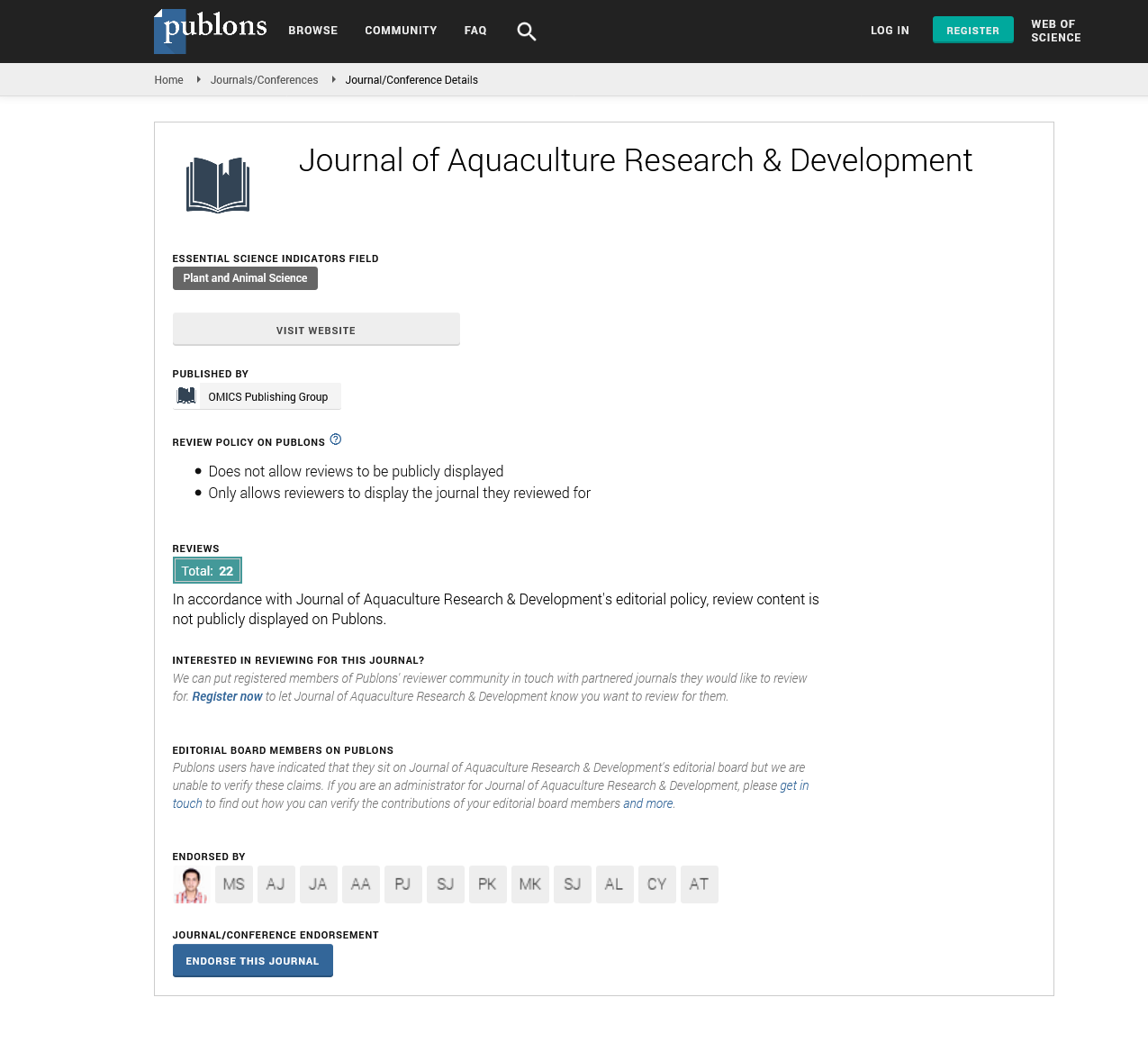Indexed In
- Online Access to Research in the Environment (OARE)
- Open J Gate
- Genamics JournalSeek
- JournalTOCs
- Scimago
- Ulrich's Periodicals Directory
- Access to Global Online Research in Agriculture (AGORA)
- Electronic Journals Library
- Centre for Agriculture and Biosciences International (CABI)
- RefSeek
- Directory of Research Journal Indexing (DRJI)
- Hamdard University
- EBSCO A-Z
- OCLC- WorldCat
- Scholarsteer
- SWB online catalog
- Virtual Library of Biology (vifabio)
- Publons
- MIAR
- University Grants Commission
- Euro Pub
- Google Scholar
Useful Links
Share This Page
Journal Flyer

Open Access Journals
- Agri and Aquaculture
- Biochemistry
- Bioinformatics & Systems Biology
- Business & Management
- Chemistry
- Clinical Sciences
- Engineering
- Food & Nutrition
- General Science
- Genetics & Molecular Biology
- Immunology & Microbiology
- Medical Sciences
- Neuroscience & Psychology
- Nursing & Health Care
- Pharmaceutical Sciences
Perspective - (2025) Volume 16, Issue 3
Ecological Stress and Adaptive Needs in Mussel Production
Sofia Perez*Received: 25-Feb-2025, Manuscript No. JARD-25-29131; Editor assigned: 27-Feb-2025, Pre QC No. JARD-25-29131 (PQ); Reviewed: 13-Mar-2025, QC No. JARD-25-29131; Revised: 20-Mar-2025, Manuscript No. JARD-25-29131 (R); Published: 27-Mar-2025, DOI: 10.35248/2155-9546.25.16.969
Description
Mussel aquaculture plays an essential role in global seafood production. As filter feeders, mussels contribute significantly to coastal water quality and provide a low-impact protein source with relatively small ecological footprints compared to other animal farming systems. Their production does not require feed input, fertilizers, or antibiotics, which makes mussel farming an attractive component of sustainable aquaculture practices.
Despite these advantages, mussel aquaculture is increasingly exposed to a range of environmental disturbances. Changing ocean conditions, pollution, disease outbreaks, and habitat degradation pose serious challenges to the stability and productivity of mussel farms. As ocean ecosystems face increasing pressure from human activity and climate variability, it becomes necessary to assess the specific vulnerabilities of mussel farming and consider effective adaptation strategies.
Ecological requirements of mussels
Mussels grow best in well-oxygenated waters with moderate salinity and stable temperatures. They rely on phytoplankton as their primary food source, which they filter from the water column. The rate at which mussels feed, grow and reproduce is tightly linked to environmental parameters such as water temperature, Salinity, Food availability, Oxygen concentration, Water current velocity.
Disruption in any of these conditions may slow growth, impair reproduction, or increase mortality, especially during early developmental stages. Mussels are particularly vulnerable during larval settlement and juvenile growth, where even slight variations in salinity or pH can cause substantial population stress.
Pollution and eutrophication
Coastal waters often receive large volumes of nutrient runoff from agricultural lands and urban areas. Excess nutrients lead to eutrophication, which may trigger algal blooms that reduce oxygen availability once the algae decompose. Hypoxic or anoxic conditions are particularly damaging to mussels, which rely on dissolved oxygen to survive.
Pollutants such as heavy metals, microplastics and pharmaceutical residues also accumulate in mussel tissues due to their filter-feeding behavior. These contaminants may not visibly harm the mussels but can impact human health upon consumption and reduce the commercial value of harvests.
Socioeconomic vulnerability
Many coastal communities depend on mussel aquaculture for employment, food security and economic stability. Environmental disturbances affect not just farm productivity but also local livelihoods. Regulatory uncertainty, market access issues and price fluctuations compound the impact of ecological pressures.
In some regions, water quality monitoring, farm licensing and pollution control policies are inconsistently enforced, increasing the risks of environmental damage. Lack of access to early warning systems or mitigation technologies places small-scale farmers at particular disadvantage.
Future directions for resilience
Given the complex and overlapping nature of the challenges faced by mussel aquaculture, an integrated response is needed. The following approaches can support the development of more resilient mussel farming systems:
Improved monitoring systems: Deploying sensors and satellite technologies to monitor water temperature, pH, and salinity and chlorophyll levels can provide real-time data for early intervention. Predictive models may assist in preparing for seasonal variability and reducing losses.
Site selection and zoning: Selecting farming sites with stable environmental conditions and low exposure to pollution and sedimentation is essential. Spatial planning and marine zoning can help reduce conflicts with other coastal users and protect vulnerable ecosystems.
Genetic improvement programs: Investments in selective breeding can help develop mussel strains with higher tolerance to stress, faster growth rates and improved shell strength. Collaborative breeding programs between industry and research institutions are key to success.
Mussel aquaculture, while environmentally efficient and economically valuable, faces growing exposure to environmental challenges. Climate variability, pollution, disease, and habitat stressors are placing pressure on both production and quality. By improving monitoring systems, fostering genetic diversity, applying integrated farming practices, and supporting informed policy-making, the sector can continue to thrive despite changing ocean conditions.
Understanding the vulnerabilities of mussel farming is not just a scientific or economic task but a broader concern tied to food security, community stability and ecological stewardship. Continued collaboration between farmers, researchers, regulators and coastal communities will be essential in ensuring the long-term viability of mussel aquaculture.
Citation: Perez S (2025). Ecological Stress and Adaptive Needs in Mussel Production. J Aquac Res Dev. 16:969.
Copyright: © 2025 Perez S. This is an open-access article distributed under the terms of the Creative Commons Attribution License, which permits unrestricted use, distribution, and reproduction in any medium, provided the original author and source are credited.

